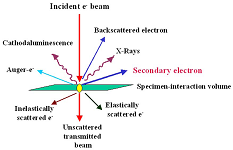
Asia Pacific Academy of Science Pte. Ltd. (APACSCI) specializes in international journal publishing. APACSCI adopts the open access publishing model and provides an important communication bridge for academic groups whose interest fields include engineering, technology, medicine, computer, mathematics, agriculture and forestry, and environment.

Characterization of polyribosylribitol phosphate by high performance molecular exclusion chromatography with ultraviolet detection
Vol 5, Issue 1, 2024
Download PDF
Abstract
Haemophilus influenzae type b is an important human pathogen causing several invasive diseases in children under five years of age, against which glycoconjugated vaccines based on polyribosylribitol phosphate have been licensed. Quimi-Hib® is the first and only vaccine against this pathogen using the polysaccharide obtained by chemical synthesis. The Active Pharmaceutical Ingredient is produced by the Center for Genetic Engineering and Biotechnology and is obtained from its conjugation to tetanus toxoid. In the present report, a characterization of polyribosylribitol phosphate was performed using the high performance molecular exclusion chromatography technique with ultraviolet detection at 215 nm. Three batches were evaluated in the study and the elution profile was determined on a SuperdexTM 75 10/300 GL Increase column with a purity percent of 77.42 ± 8.97 and an average molar mass of 7381 Da ± 210.93. The main impurity present in polyribosylribitol phosphate is dimethyl sulfoxide, the solvent used in the activation reaction with the N-hydroxysuccinimidyl ester of β-maleimidopropionic acid. The polyribosylribitol phosphate was purified by filtration with a 2000 Da Amicon Ultra-15 to 99.1% purity and conjugated to tetanus toxoid. The yield of the conjugation reaction with the purified polysaccharide was 30.0% ± 1.77% which shows no significant difference with the control which was 33.7% ± 3.57% demonstrating that dimethyl sulfoxide does not affect the performance of the conjugation reaction.
Keywords
References
- Biere E, Rubin L, Moro P, et al. Prevention and Control of Haemophilus influenzae Type b Disease Recommendations of the Advisory Committee on Immunization Practices (ACIP). Morb Mortal Wkly Rep. 2014; 63: 1-14.
- Essam A, Almehdar H, Redwan E. Hib Vaccines: Past, Present, and Future Perspectives. J Immunol Res. 2016; 2016: 7203587. doi: 10.1155/2016/7203587
- Bencomo V. Patent to the invention for Ribose-ribitol-phosphate-derived oligosaccharides, methods for preparing it, immunogens comprising it and vaccines comprising said immunogen. US patent 2,252,045 , 12 June 1999.
- Lindberg A. Glycoprotein conjugate vaccines. Vaccine. 1999; (17 Suppl 2): S28-36.
- Anderson PW, Pichichero ME, Stein EC, et al. Effect of oligosaccharide chain length, exposed terminal groups, and hapten loading the antibody response of human adults and infants to vaccines consisting of Haemophilus influenzae type b capsular antigen uniterminally coupled to the diphteria protein CRM197. J. Immunol. 1989; 142(7): 2464-2468.
- Vartak A, Sucheck S. Recent Advances in Subunit Vaccine Carriers. Vaccines (Basel). 2016; 4(2): 12. doi: 10.3390/vaccines4020012
- Pollard AJ, Perrett KP, Beverley PC. Maintaining protection against invasive bacteria with protein -polysaccharide conjugate vaccines. Nat Rev Immunol. 2009; 9(3): 213-220.
- Ambrón LL, Torres LIE, Carreras AP, et al. Cuban experience in immunization, 1962 -2016. Rev Panam Public Health. 2018; 42: e34. doi: 10.26633/RPSP.2018.34
- Center for State Control of Medicines (CECMED). QuimiHib® vaccine sanitary registry. Havana: CECMED; 2003.
- Garay HE. Synthesis of chemically modified peptides with potential pharmaceutical applications [ PhD thesis]. Havana: University of Havana; 2012.
- Soto C, Cuello M, Alfonso Y, et al. Validation of a colorimetric technique for carbohydrate determination. VacciMonitor. 2002; 11(3): 11-14.
- Guillén A, Hernández AV, Pérez V, et al. Validation of a spectrophotometric method for quantification of free thiols in filgrastim. Rev Mex Ing Quim. 2016; 15(3): 741-748.
- Lowry OH, Rosebrough NJ, Farr AL, Randall RJ. Protein measurement with the folin phenol reagent. J Biol Chem . 1951; 193: 265-275.
- Walker JM. The protein Protocols Handbook. Totowa, NJ: Humana Press Inc; 2009.
- López-Legarda X, Taramuel-Gallardo A, Arboleda Echavarría C, et al. Comparison of methods using sulfuric acid for the determination of total sugars. Rev Cub Quim. 2017; 29(2): 180-198.
- Perez CS, Ortiz PJ. Spectroscopy. Havana: Félix Varela; 2010.
- Albericio F, Annis I, Royo M, Barany G. Preparation and handlingof peptides containing methionine and cysteine. In: Chan WC, White PD (editors). Fmoc solid phase peptide synthesis. A Practical Approach. NewYork: Oxford University Press Inc; 2000. pp. 77-109.
Supporting Agencies
Copyright (c) 2024 Ailen Valdés-Cantero, Yaneylis Méndez-Hernández, Ania Cabrales-Rico, Mayra Wood-Duque, Jessica Hernández-Correa, Belinda Díaz-Montel

This work is licensed under a Creative Commons Attribution 4.0 International License.

This site is licensed under a Creative Commons Attribution 4.0 International License (CC BY 4.0).
1.jpg)
Prof. Sivanesan Subramanian
Anna University, India





.jpg)
